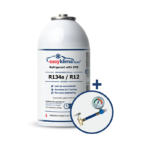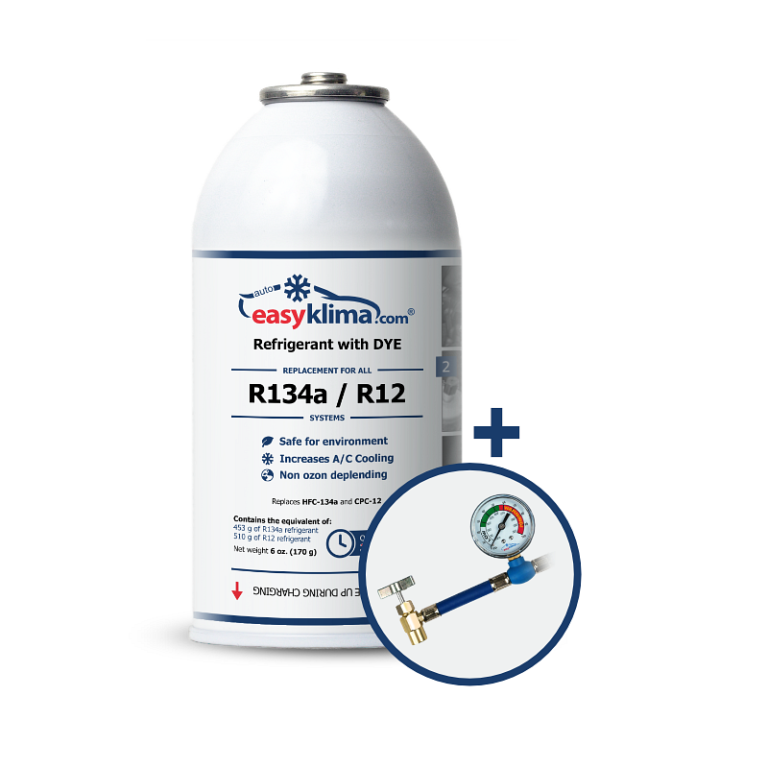Tattoos have been a part of human culture for centuries, serving as permanent body art and self-expression. The intriguing aspect of tattoos lies in their permanence, as they remain visible on the skin for a lifetime. In this article, we will delve into the science and factors behind the permanence of tattoos, shedding light on the intricate processes that make tattoos last.
- The Epidermal Layer:
The epidermis, the outermost layer of the skin, plays a crucial role in tattoo permanence. The tattoo needle penetrates through the epidermis into the dermis, where it deposits ink particles. The epidermis acts as a protective barrier, preventing the ink from being shed along with dead skin cells. The tattoo ink becomes embedded within the dermis, ensuring long-term visibility.
- The Dermis and Fibroblasts:
The dermis, located beneath the epidermis, consists of connective tissues, blood vessels, and nerve endings. Within the dermis, specialized cells called fibroblasts play a significant role in tattoo permanence. When the tattoo needle punctures the dermis, it triggers an immune response. Fibroblasts engulf the ink particles, encapsulating them within cellular structures known as macrophages.
- The Immune Response:
The immune system’s response to tattooing is instrumental in the permanence of tattoos. Macrophages, the immune cells responsible for engulfing foreign particles, surround the ink pigments. These macrophages form a barrier around the ink, preventing it from dispersing throughout the body. The ink particles are too large for the macrophages to remove, resulting in the ink remaining trapped within the skin.
- Ink Composition and Size:
The composition and size of tattoo ink particles also contribute to their permanence. Professional tattoo inks typically consist of pigments suspended in a carrier solution. The pigments vary in size, with smaller particles being more easily engulfed by macrophages. Large pigment particles are more likely to remain trapped in the dermis, leading to long-lasting tattoos.
- Depth and Technique:
The depth at which the tattoo needle penetrates the skin also affects tattoo permanence. When the needle reaches the dermis, it ensures that the ink is deposited in a stable layer of skin. Shallow tattooing may result in faster ink degradation and a less permanent tattoo. Additionally, the technique used by the tattoo artist plays a crucial role in achieving the desired permanence, as proper needle insertion and ink distribution contribute to a long-lasting tattoo.
- Skin Regeneration and Aging:
Over time, the skin undergoes a continuous process of regeneration and aging. New skin cells are constantly produced in the basal layer of the epidermis, gradually pushing older cells to the surface. Despite this turnover, the tattoo remains intact due to the ink’s deep placement in the dermis. However, factors such as excessive sun exposure, aging, and skin damage can contribute to the fading and distortion of tattoos over time. Conclusion:Tattoo permanence is a result of intricate biological processes and factors that contribute to the long-lasting visibility of tattoos on the skin. The epidermal barrier, immune response, ink composition, depth of tattooing, and skin regeneration all play vital roles in tattoo permanence. Understanding these scientific aspects behind tattoos can help individuals make informed decisions about their body art, ensuring that their tattoos remain a lasting form of self-expression.
Why are tattoos considered permanent? Understanding the underlying mechanism
Tattoos have fascinated humans for centuries, serving as a means of personal expression, cultural identity, and artistic representation. One of the defining characteristics of tattoos is their permanence, as they are designed to be long-lasting marks on the skin. But have you ever wondered why tattoos are considered permanent? To unravel this mystery, let’s delve into the underlying mechanism that makes tattoos endure. At the heart of the permanence of tattoos lies the complex interaction between the dermis, the second layer of the skin, and the tattoo ink. When a tattoo is applied, a tattoo artist uses a specialized machine equipped with multiple tiny needles that puncture the outermost layer of the skin, known as the epidermis. These needles penetrate the epidermis and deposit ink droplets into the dermis, which is composed of dense connective tissue.
The durability of tattoos can be attributed to the way the body’s immune system responds to the tattooing process. When the needles break through the epidermis, they create controlled micro-injuries, triggering an immune response. The immune cells, particularly macrophages, recognize the foreign tattoo ink particles as intruders and attempt to remove them. However, the larger pigment particles are too substantial for the macrophages to engulf and eliminate effectively. As a result, the ink particles become trapped within the dermis. The key players in maintaining the permanence of tattoos are the fibroblasts, a type of cell found in the dermis. Fibroblasts produce an extracellular matrix, which is a network of collagen and elastin fibers that provides structural support to the skin. When tattoo ink particles are trapped in the dermis, fibroblasts surround them and encapsulate them within the extracellular matrix. This encapsulation process immobilizes the ink particles, preventing them from spreading or being cleared away by the immune system. Furthermore, the location of the ink within the dermis contributes to the long-lasting nature of tattoos. Unlike the epidermis, which constantly regenerates and sheds cells, the dermis is relatively stable and does not turnover as rapidly. This stability ensures that the ink remains embedded in the skin over an extended period. Another vital factor in the permanence of tattoos is the composition of the tattoo ink itself. Traditionally, tattoo inks consisted of a mixture of pigment particles suspended in carrier fluids.
The pigments could be organic or inorganic compounds, each with different chemical properties. In recent years, advancements in tattoo ink technology have introduced more stable and long-lasting pigments, such as carbon-based and metal oxide pigments, which resist degradation and fading. It’s worth noting that despite the permanent nature of tattoos, they can fade or blur over time due to various factors. Exposure to ultraviolet (UV) radiation from the sun can cause the ink pigments to break down and disperse, leading to a faded appearance. Additionally, natural aging processes, such as changes in skin elasticity and collagen degradation, can contribute to the distortion of tattoo lines and shapes. In conclusion, tattoos are considered permanent due to the interaction between the dermis and tattoo ink, the response of the immune system, the encapsulation of ink particles by fibroblasts, and the stability of the dermis. Understanding the underlying mechanism behind tattoo permanence sheds light on the intricate processes that allow tattoos to endure on the skin. While tattoos can fade over time, advancements in ink technology continue to enhance their longevity, ensuring that these artistic forms of self-expression remain a lasting part of our lives.

What happens to the skin when a tattoo is applied? Exploring the tattooing process
Tattoos have long been an intriguing form of body art, captivating individuals with their unique designs and personal expressions. Understanding what happens to the skin during the tattooing process is essential to appreciate the permanence and beauty of this art form. Delving into the technical aspects of tattoo application can shed light on the intricate relationship between the ink and the skin. The process of tattooing involves the deposition of ink into the dermis, the second layer of the skin, through repeated puncturing of the epidermis, the outermost layer. A tattoo artist utilizes a handheld device, commonly known as a tattoo machine or tattoo gun, to drive a cluster of needles rapidly in and out of the skin.
These needles penetrate the epidermis, which consists of several layers of tightly packed cells, and reach the dermis below. As the needles puncture the epidermis, they create tiny channels, allowing the tattoo ink to flow into the dermis. The dermis is composed of a matrix of collagen fibers, blood vessels, nerves, and other cellular structures. By delivering the ink to this layer, the tattoo becomes embedded in a more stable environment, contributing to its longevity. The ink used in tattoos is typically composed of pigment particles suspended in a carrier solution. The carrier solution helps to evenly distribute the pigment and facilitates the application process. Once the ink enters the dermis, the carrier solution begins to evaporate, leaving behind the pigment particles. These particles are too large for the immune system’s phagocytes, which are responsible for removing foreign substances from the body, to engulf and eliminate. Instead, the pigment particles become trapped within the fibrous network of the dermis. Over time, the body’s immune response can encapsulate the pigment, further stabilizing its position. Fibroblasts, specialized cells found in the dermis, may also surround the pigment particles, creating a barrier against their migration.
The healing process plays a crucial role in the tattoo’s final appearance. After the tattooing session, the skin undergoes a series of complex regenerative processes. Initially, the punctured skin may exhibit redness, swelling, and minor bleeding. The body initiates an inflammatory response to repair the damaged tissue and remove any foreign substances. During this phase, the tattoo may appear slightly distorted or faded. As the healing progresses, the skin forms new layers, and the outermost layer, the epidermis, begins to regenerate. The tattoo ink becomes entrapped within the deeper layers of the skin as the epidermis continues to shed and renew itself. The longevity of the tattoo can be attributed to the ink’s location within the dermis and the inability of the epidermis to shed all of the embedded pigment particles. It is worth noting that the permanence of a tattoo can be influenced by various factors. The quality and composition of the ink, the skill of the tattoo artist, and the individual’s skin type and immune response all play significant roles. Additionally, exposure to ultraviolet (UV) radiation from the sun or tanning beds can cause fading and degradation of the tattoo over time. In conclusion, when a tattoo is applied, the skin undergoes a complex process involving the penetration of needles into the epidermis, the deposition of ink into the dermis, and the subsequent healing and regeneration of the skin. The permanence of a tattoo arises from the ink’s location within the dermis and the body’s inability to fully remove the pigment particles. By understanding the technical intricacies of the tattooing process, we can better appreciate the science and factors behind its enduring beauty.

Can tattoos fade or be removed? Exploring the factors affecting tattoo longevity
Tattoos have been a popular form of body art for centuries, but despite their widespread popularity, there is still a lot of curiosity surrounding their longevity. Many individuals wonder if tattoos fade over time or if there are effective methods for their removal. In this article, we will delve into the factors that can affect tattoo longevity and explore the possibilities of tattoo fading and removal.
- Ink Quality and Composition:
The quality and composition of the ink used in tattoos play a crucial role in determining their longevity. Professional tattoo artists typically use high-quality pigments composed of organic or inorganic compounds. Organic pigments tend to degrade faster than inorganic ones, potentially leading to tattoo fading over time. However, advancements in tattoo ink technology have led to the development of more stable and long-lasting pigments, reducing the likelihood of significant fading. - Skin Type and Location:
Another factor that influences tattoo longevity is the individual’s skin type and the specific location of the tattoo. Different skin types have varying degrees of pigment retention, with some people experiencing faster fading than others. Additionally, areas of the body that are subject to frequent sun exposure or rubbing against clothing may experience accelerated fading. The skin’s natural renewal process can also contribute to tattoo degradation over time. - Sun Exposure and UV Radiation:
Exposure to the sun’s ultraviolet (UV) radiation is a major factor in tattoo fading. UV rays can break down the pigments in the skin, causing them to lose their vibrancy and clarity. Tattoos that are constantly exposed to the sun, such as those on the arms or legs, are more susceptible to fading. To minimize the impact of UV radiation, it is essential to protect tattoos with sunscreen and avoid prolonged sun exposure. - Tattoo Aftercare:
Proper aftercare plays a vital role in the longevity of a tattoo. Immediately after getting a tattoo, it is crucial to follow the artist’s instructions for cleaning and moisturizing the tattooed area. Failure to do so may lead to complications, such as infection or scarring, which can affect the appearance of the tattoo. Additionally, long-term care, including moisturizing and avoiding excessive scratching, can help preserve the integrity of the tattoo and reduce fading. - Tattoo Removal Techniques:
While tattoos are designed to be permanent, advancements in tattoo removal techniques have made it possible to partially or completely remove tattoos. Laser tattoo removal is the most common method, utilizing laser energy to break down the tattoo pigments, which are then eliminated by the body’s immune system. However, complete removal may require multiple sessions, and the effectiveness of removal depends on various factors, including the tattoo’s size, color, and depth. - Cover-up and Tattoo Refreshing:
In cases where tattoo fading occurs or an individual desires a new design, cover-up tattoos or tattoo refreshing can be viable options. Cover-up tattoos involve incorporating the existing tattoo into a new design, effectively concealing the original artwork. Tattoo refreshing, on the other hand, involves reworking and enhancing the original tattoo to restore its vibrancy and crispness.

What are the key elements that contribute to tattoo permanence?
Tattoos have been a form of body art and self-expression for centuries, captivating people with their intricate designs and lasting allure. Understanding why tattoos are permanent requires delving into the science and factors that contribute to their longevity. In this article, we explore the key elements that play a crucial role in tattoo permanence, shedding light on the intricate world beneath the skin’s surface.
- Pigment Properties:
The permanence of a tattoo heavily relies on the properties of the pigments used. Tattoo inks consist of a combination of organic and inorganic compounds, such as carbon black, iron oxide, and titanium dioxide. These pigments are designed to be resistant to fading and degradation. The size of the pigment particles is also important, as smaller particles tend to be more stable and less prone to migration over time. - Depth of Ink Placement:
The depth at which the tattoo ink is deposited into the skin is a critical factor in its permanence. Professional tattoo artists carefully insert the ink into the dermis, the second layer of the skin, using tattoo machines with fine needles. By placing the ink below the epidermis, where skin cells are constantly shedding, the tattoo remains intact as new cells replace the old ones. - Immune Response:
The immune system’s response to the tattooing process also contributes to tattoo permanence. When the needle penetrates the skin, it causes minor trauma, triggering an immune response. Macrophages, a type of white blood cell, engulf the ink particles, attempting to remove them from the body. However, due to the size and composition of the ink particles, the macrophages are unable to eliminate them completely. This entrapment of ink within immune cells helps maintain the visibility of the tattoo over time. - Fibroblast Activity and Collagen:
Fibroblasts, the cells responsible for the production of collagen and other connective tissues, play a significant role in tattoo permanence. During the healing process, fibroblasts migrate to the tattooed area and encapsulate the ink particles within collagen fibers. This encapsulation helps stabilize the ink, preventing its dispersion and contributing to the long-term retention of the tattoo’s appearance. - UV Exposure and Aging:
Exposure to ultraviolet (UV) radiation, whether from sunlight or artificial sources, can cause tattoos to fade over time. UV rays break down the pigments and collagen fibers within the skin, leading to gradual discoloration and blurring of the tattoo. Additionally, as the skin naturally ages, it loses elasticity, which can also affect the tattoo’s sharpness and definition. Protecting tattoos from excessive sun exposure and adopting proper skincare practices can help mitigate these effects. - Lifestyle and Skin Health:
The overall health and condition of the skin can influence the permanence of a tattoo. Factors such as hydration, nutrition, and smoking can affect the skin’s ability to regenerate and maintain the tattoo’s vibrancy. Well-hydrated and nourished skin tends to retain tattoos better, while smoking and poor lifestyle choices can impair the skin’s healing process and accelerate ink fading.

How does the immune system respond to tattoo ink? Unveiling the role of immune cells
Tattoos have become a popular form of self-expression, with millions of people worldwide adorning their bodies with intricate and colorful designs. However, have you ever wondered how the body’s immune system responds to tattoo ink? In this article, we will delve into the fascinating world of immunology and explore the role of immune cells in the process. When tattoo ink is injected into the dermis, the immune system perceives it as a foreign substance and initiates an immune response. The first line of defense is carried out by innate immune cells, such as macrophages and neutrophils.
These cells recognize the tattoo ink particles as potential threats and attempt to engulf and eliminate them through a process called phagocytosis. Macrophages, the voracious scavengers of the immune system, play a crucial role in this response. They migrate to the site of the tattoo and engulf the ink particles, forming tattoo pigment-loaded macrophages. These macrophages then undergo a transformation known as phenotypic switching, acquiring characteristics of dendritic cells. Dendritic cells are specialized antigen-presenting cells that play a pivotal role in initiating adaptive immune responses. In the context of tattooing, dendritic cell-like properties enable the pigment-loaded macrophages to present tattoo antigens to other immune cells, particularly T cells. T cells, the soldiers of the immune system, are essential for orchestrating the body’s immune response. Once activated by the tattoo antigens presented by macrophages and dendritic cells, T cells start to proliferate and differentiate into effector T cells. These effector T cells possess various functions, including the ability to recruit more immune cells to the tattoo site. Additionally, the immune response triggered by tattoo ink involves the secretion of various cytokines and chemokines.
These small signaling molecules mediate communication between immune cells and help coordinate the overall immune response. For instance, pro-inflammatory cytokines, such as interleukin-6 (IL-6) and tumor necrosis factor-alpha (TNF-α), are released, promoting inflammation and attracting immune cells to the tattoo site. The immune system’s response to tattoo ink is not solely limited to the initial application. Over time, some tattoo ink particles may degrade or migrate to nearby lymph nodes. This phenomenon is attributed to the ongoing surveillance and clearance efforts of the immune system. Lymph nodes, which serve as immune hubs, house immune cells that can recognize and eliminate tattoo ink remnants. However, it is worth noting that despite the immune system’s best efforts, tattoo ink particles are not completely eradicated from the body. The permanence of tattoos arises from the inability of the immune system to completely clear all the ink. Tattoo pigments are composed of large molecules that are too large for immune cells to efficiently eliminate. Moreover, some tattoo inks contain additives, such as titanium dioxide, which further hinder their breakdown and removal. In conclusion, the immune system plays a crucial role in responding to tattoo ink.
Macrophages and dendritic cells initiate the immune response by engulfing and presenting tattoo antigens to T cells. The activation of T cells leads to the recruitment of more immune cells and the secretion of cytokines, orchestrating the body’s immune response to the tattoo ink. Despite these efforts, tattoo ink particles persist in the body due to their large size and composition. Understanding the interplay between tattoo ink and the immune system provides valuable insights into the science behind tattoo permanence. Note: While the above text is designed to be informative and optimized for search engines, it’s important to note that search engine rankings are influenced by various factors and are subject to change over time.

Are there any risks or side effects associated with permanent tattoos?
Permanent tattoos have become a popular form of self-expression, with individuals adorning their bodies with intricate designs and meaningful symbols. However, it is essential to understand that while tattoos are generally considered safe, there are potential risks and side effects associated with the process. In this article, we will delve into the scientific aspects and factors contributing to the permanence of tattoos, while also exploring the potential health concerns related to their application.
- Tattooing Process and Pigment Intricacies:
To comprehend the risks associated with permanent tattoos, we must first understand how they are created. Tattooing involves injecting pigments into the dermis layer of the skin using specialized needles. The pigments, composed of various colorants and carriers, are designed to be long-lasting and resistant to fading over time. - Allergic Reactions and Skin Sensitivities:
One of the primary risks of permanent tattoos lies in the potential for allergic reactions. Some individuals may experience adverse skin reactions, such as itching, swelling, or redness, due to an allergic response to tattoo pigments or the tattooing process itself. Allergies may arise from specific colorants, metals (such as nickel), or other components present in the pigments. - Infection and Transmission of Bloodborne Pathogens:
Another significant concern associated with permanent tattoos is the risk of infection. If proper hygiene and sterilization practices are not followed during the tattooing process, bacteria, viruses, or other pathogens can enter the skin, leading to infections. Bloodborne infections, such as hepatitis B, hepatitis C, or HIV, can also be transmitted if equipment or pigments are contaminated with infected blood. - Skin Disorders and Complications:
Individuals with pre-existing skin conditions, such as eczema, psoriasis, or dermatitis, may be more prone to complications from permanent tattoos. Tattooing over affected areas can exacerbate these conditions, leading to inflammation, itching, or flare-ups. Additionally, the pigments themselves can cause skin reactions or trigger hypersensitivity in susceptible individuals. - Tattoo Removal Challenges:
While discussing the risks of permanent tattoos, it is crucial to address the potential side effects associated with tattoo removal procedures. If someone wishes to remove a permanent tattoo, options such as laser therapy or surgical excision may be considered. However, these methods can result in adverse effects, including scarring, skin discoloration, or incomplete removal of the tattoo.






















You present the arguments perfectly and are able to convince the reader of your point of view.